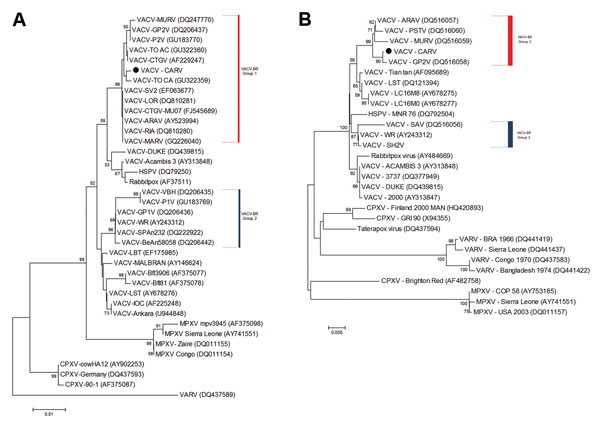Volume 19, Number 12—December 2013
Letter
Vaccinia Virus in Household Environment during Bovine Vaccinia Outbreak, Brazil
Figure

Figure. . Phylogenetic trees based on orthopoxvirus nucleotide sequences, including vaccinia virus (VACV) from Brazil (VACV-BR). Phylogenetic analysis was performed for A56R (A) and A26L (B) gene sequences and grouped VACV-BR strains into 2 branches: group 1 (red bar) and 2 (blue bar). The Carangola virus (CARV) isolate is indicated by the black dots. Both trees show grouping of CARV into VACV-BR cluster composed of Guarani P2 virus (GP2V), Cantagalo virus (CTGV), and other viruses. Trees were constructed by using the neighbor-joining method, the Tamura-Nei model of nucleotide substitutions, and bootstrap values of 1,000 replicates in MEGA version 4.0 (Arizona State University, Phoenix, AZ, USA). GenBank accession numbers are indicated in parentheses. Values along the branches indicate bootstrap values. Scale bars indicate nucleotide substitutions per site. MURV, Muriaé virus; MARV, Mariana virus; HSPV, horsepox virus; MPXV, monkeypox virus; ARAV, Araçatuba virus; PSTV, Passatempo virus; VARV, variola virus.